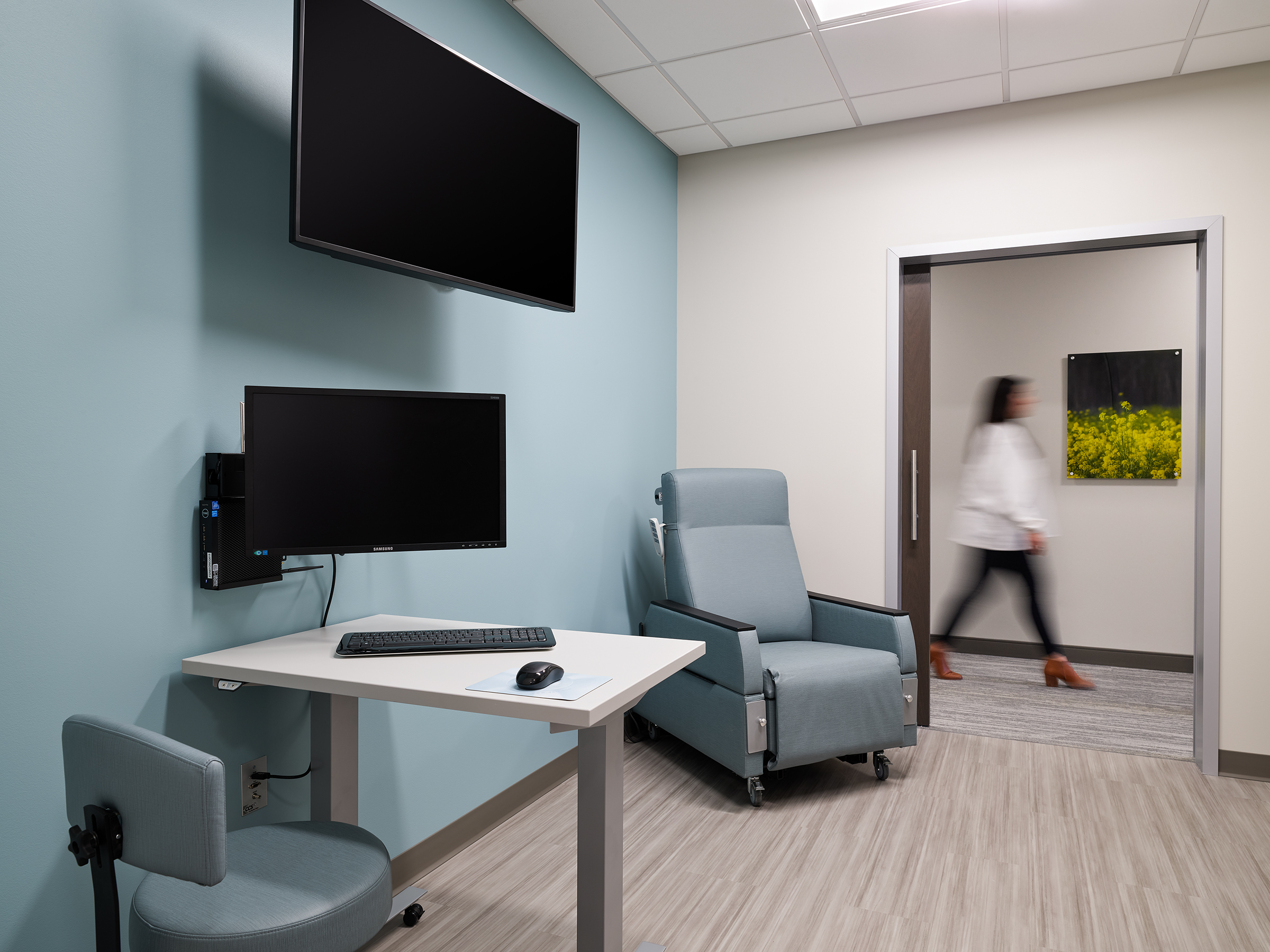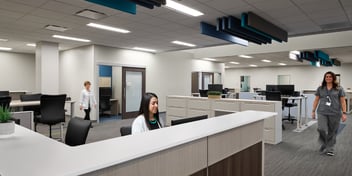
Twenty-first century healthcare designers are notorious for analyzing even the smallest details. Whether it's carefully analyzing the health benefits of daylight on patients or considering better safety features such as handrail materials for more considerate designs. Yet, technology is often pushed aside, left to be addressed only by the health care organization’s information and technology departments. We think that looking to the future and embracing technology as a team can dramatically improve building designs and patient outcomes!
Modern Tech is Changing Medicine
Embracing technology isn't just a good idea, it can actually save lives! The COVID-19 pandemic demanded the health care design community to think out of the box and beyond more traditional design ideas. Most notably, this pandemic has forced the rapid adoption use of technology and accelerated implementations that could have taken many years! While health care leaders are congratulating the industry's quick adaptations and improved processes, it can't stop there. Designs for clinics and hospitals MUST address the positive disrupters technology can bring, including patient safety, improved outcomes and the overall ROI. Virtual care, building systems integrations, infection control dashboards, predictive analytics, remote monitoring, mobile health care units, and facility designs that encourage the application of technology-based workflows are no longer just futuristic pipe dreams – they're the clearest path forward for better care NOW. Helping organizations incorporate these big ideas into the design process can improve outcomes by capturing proper clinical workflow, real infrastructure needs and space requirements. For this reason, it's important that you are exposed to current health trends and options that help you think beyond how care is delivered by providing informed decisions and comprehensive designs.
Better Experiences. Better Care.
Crafting facilities that allow for phenomenal care and an excalibur experience is the ultimate goal. To achieve this in the 21st century, a multitude of patient safety technologies are available and should be explored during master planning, space programming and design. Each impacts process, operations, space programs, adjacencies and room layouts to varying degrees, but all can improve patient safety when properly implemented.
Better Rooms for Patients
The integration of electronic white boards with electronic medical records has the ability to provide vital information to patients and clinical staff! As soon as a nurse walks in the room, they'll know about assigned caregivers, fall risk, NPO, and more. Space and infrastructure considerations also include patient footwall monitors and digital displays outside patient room doors. Each of these technologies support patient safety, but not all are appropriate for every facility. While we've touted the benefits in this post, technology should not be purchased for technology’s sake. Careful evaluation of what’s appropriate for
your facility requires detailed assessments based on operational requirements and return on investment.
The New Facility Model
Health facilities design professionals must recognize that an old facility model nicely decorated as a high-end hotel is no longer revolutionary or forward thinking. They should ensure technology is always in the background and delivers added value to enhance the patient experience and consider that patient safety opportunities are present in every component of a health care facility. Often, health care designers are reacting to technology rather than embracing it, which is why a new approach is needed.



